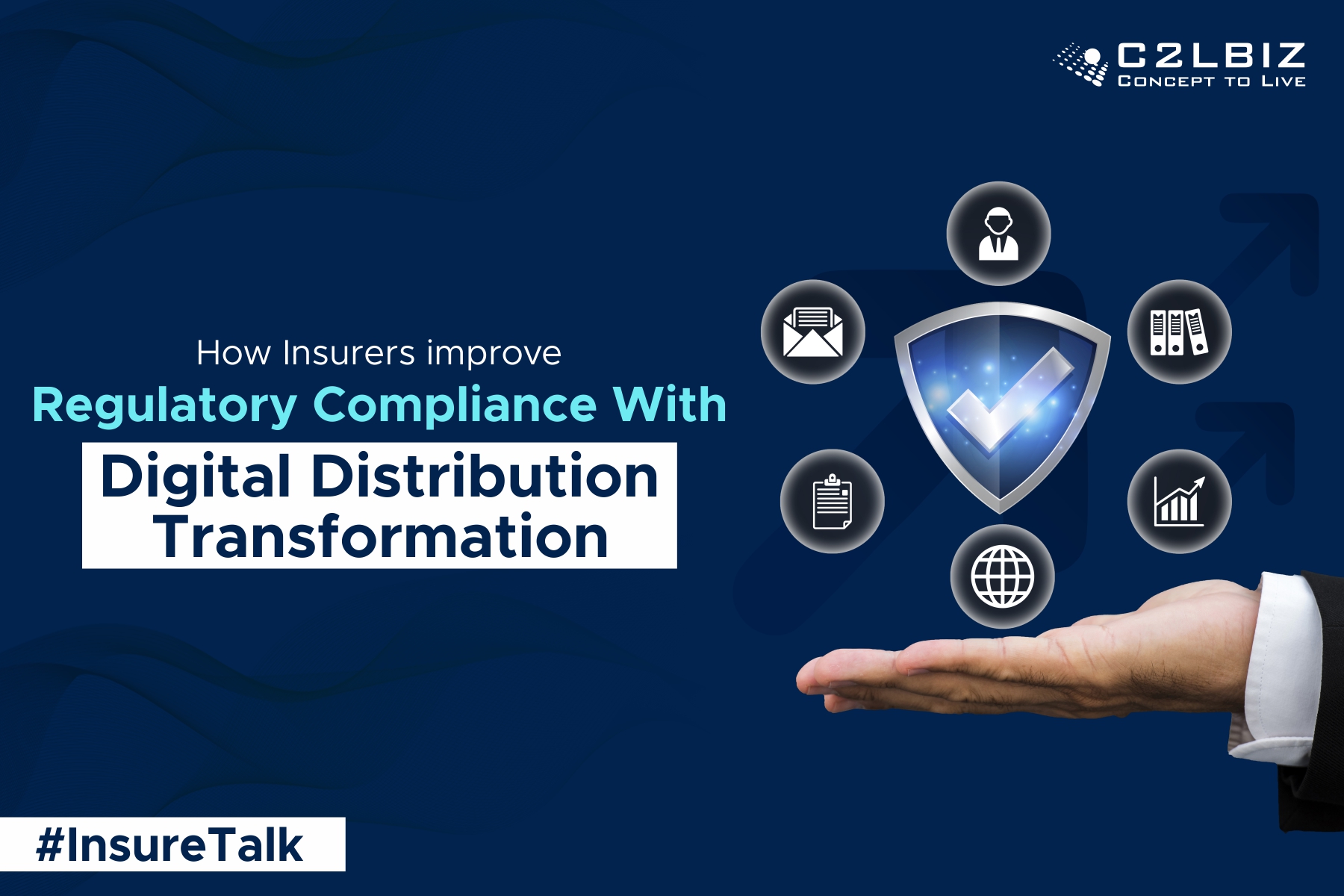Insurers are amid rough weather—tough economic conditions, climate change driven risks, sales reforms, customer privacy needs, and even solvency struggles. Such a complex climate poses major challenges, especially from the regulatory standpoint. This is where Digital Distribution Transformation makes it easier for insurers to stay on top of evolving compliance needs in an end-to-end manner.
Extensive risk management is among the key asks of most insurance regulatory compliance mandates. Accurate yet streamlined processes and comprehensive tracking become basic hygiene at this point. Add to these the mandatory audits which require CXO signoffs which call for in-depth tracking and optimization capabilities. The only answer to such needs? Comprehensive digital transformation of insurers’ business and distribution models.
Digital Distribution Transformation’s benefits go beyond just automation driven streamlined processes. It ushers in data accuracy, real-time reporting options, and single stop management dashboards. Here are three ways in which leading insurers benefit on the regulatory compliance front with the use of Digital Distribution Transformation.
Benefit #1
Highest levels of data accuracy
Digital Distribution Transformation ushers in end-to-end automation powered by seamless integration and process optimization. To start with, reduction of manual processes via automation of data collection backed by data governance results in high quality data. This enables centralized data systems, extensive reporting, and business insights which fulfil compliance requirements. Insurers build on these foundations to realize business needs like detailed management dashboard capabilities.
Initiatives like Digital Distribution Transformation also pave the way for cutting edge machine learning (ML) artificial intelligence (AI) systems essential to drive insurer growth.
Data quality is critical in insurance due to the increase in regulatory scrutiny on insurers’ AI/ML usage. A case in point is the latest Colorado Division of Insurance’s regulatory mandates that holds insurers accountable for the external data (self-collected and third party) used in testing AI and data systems. Insurers can significantly streamline compliance to such upcoming regulations with Digital Distribution Transformation.
Benefit #2
Extensive reporting and end to end audit trails
Leading insurers gain access to extensive reporting with Digital Distribution Transformation. Real time reporting ensures near instant data access and analysis to meet compliance goals.
End to end visibility accompanies Digital Distribution Transformation. This is because audit processes undergo extensive streamlining as part of these exercises. It empowers insurers’ audit teams with instant and accurate reports to answer regulator queries. Transparent operations and trust are a natural outcome.
For instance, consider the common scenario where regulators demand visibility across policy sale and transaction processing cycles. It can be especially difficult for global insurance companies which must comply with regional regulations. Such queries include customer risk profiles, distribution channel authentication, policy execution, premium collections, and claim disbursals.
Digital Distribution Transformation unlocks advanced reporting options that accelerate transparency and compliance in the face of regulatory queries. At the same time, these benefits strengthen the customer and distributor sales processes.
Benefit #3
Powerful analytics and management dashboards
The insurance industry has seen a widespread adoption of advanced analytics. These ensure that insurers can sift through their vast data stores to detect anomalies and compliance breaches. Digital Distribution Transformation is the first step to create advanced analytics that facilitate single stop dashboards for stakeholders across the business.
Management dashboards equip top leadership with real time views of key performance indicators that include compliance. Common aspects on this front often include audit readiness and incident response turnarounds. Risk heatmaps, incident tracking, and proactive alerts for non-compliance further these decision support aids.
Thanks to the dynamic insurtech ecosystem, insurers can further advance the potential of these insights. Case in points include compliance needs like risk evaluation, KYC compliance, or financial oversight.
What-If scenario analysis is another advanced analytics use case. This allows insurers to simulate their future initiatives to understand possible regulatory implications. For example, insurers can use predictive analytics to analyze the possible effects of claims approvals that are compliant with regulatory mandates.
Future ready compliance readiness
Stricter process compliance and an increase in transparency are the key deliverables demanded by regulatory bodies. Insurers must ensure systemic tracking, process refinements, built-in controls, and change management to meet these requirements.
Modern regulatory needs call for business and technology readiness driven by Digital Data Transformation. Drive your Digital Distribution Transformation journey with the experienced C2L BIZ team. This promise is backed by our successful relationships with over 40 leading insurance carriers and customer implementations that span across 12 countries.
Contact us today on sales@c2lbiz.com or click on the button below to learn more about how your insurance business can stay on top of regulatory compliance needs with Digital Distribution Transformation.





